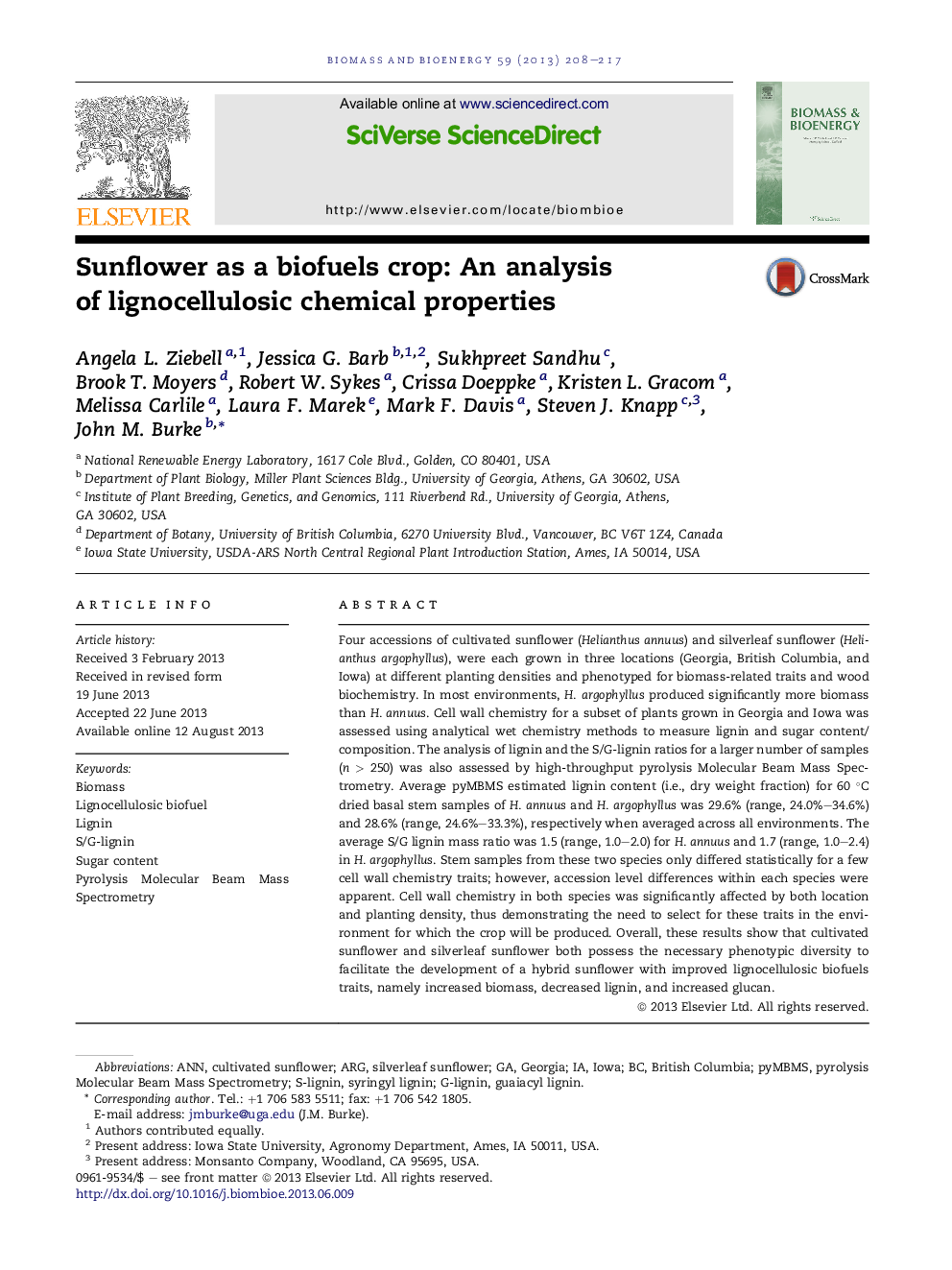| کد مقاله | کد نشریه | سال انتشار | مقاله انگلیسی | نسخه تمام متن |
|---|---|---|---|---|
| 677021 | 1459834 | 2013 | 10 صفحه PDF | دانلود رایگان |

• Stems of cultivated and silverleaf sunflower have similar lignocellulosic chemistry.
• Intraspecific variation for lignocellulosic chemistry and biomass traits was high.
• Plant growth and cell wall chemistry were affected by planting density.
• Main stem biomass was unchanged or increased as planting density increased.
Four accessions of cultivated sunflower (Helianthus annuus) and silverleaf sunflower (Helianthus argophyllus), were each grown in three locations (Georgia, British Columbia, and Iowa) at different planting densities and phenotyped for biomass-related traits and wood biochemistry. In most environments, H. argophyllus produced significantly more biomass than H. annuus. Cell wall chemistry for a subset of plants grown in Georgia and Iowa was assessed using analytical wet chemistry methods to measure lignin and sugar content/composition. The analysis of lignin and the S/G-lignin ratios for a larger number of samples (n > 250) was also assessed by high-throughput pyrolysis Molecular Beam Mass Spectrometry. Average pyMBMS estimated lignin content (i.e., dry weight fraction) for 60 °C dried basal stem samples of H. annuus and H. argophyllus was 29.6% (range, 24.0%–34.6%) and 28.6% (range, 24.6%–33.3%), respectively when averaged across all environments. The average S/G lignin mass ratio was 1.5 (range, 1.0–2.0) for H. annuus and 1.7 (range, 1.0–2.4) in H. argophyllus. Stem samples from these two species only differed statistically for a few cell wall chemistry traits; however, accession level differences within each species were apparent. Cell wall chemistry in both species was significantly affected by both location and planting density, thus demonstrating the need to select for these traits in the environment for which the crop will be produced. Overall, these results show that cultivated sunflower and silverleaf sunflower both possess the necessary phenotypic diversity to facilitate the development of a hybrid sunflower with improved lignocellulosic biofuels traits, namely increased biomass, decreased lignin, and increased glucan.
Journal: Biomass and Bioenergy - Volume 59, December 2013, Pages 208–217